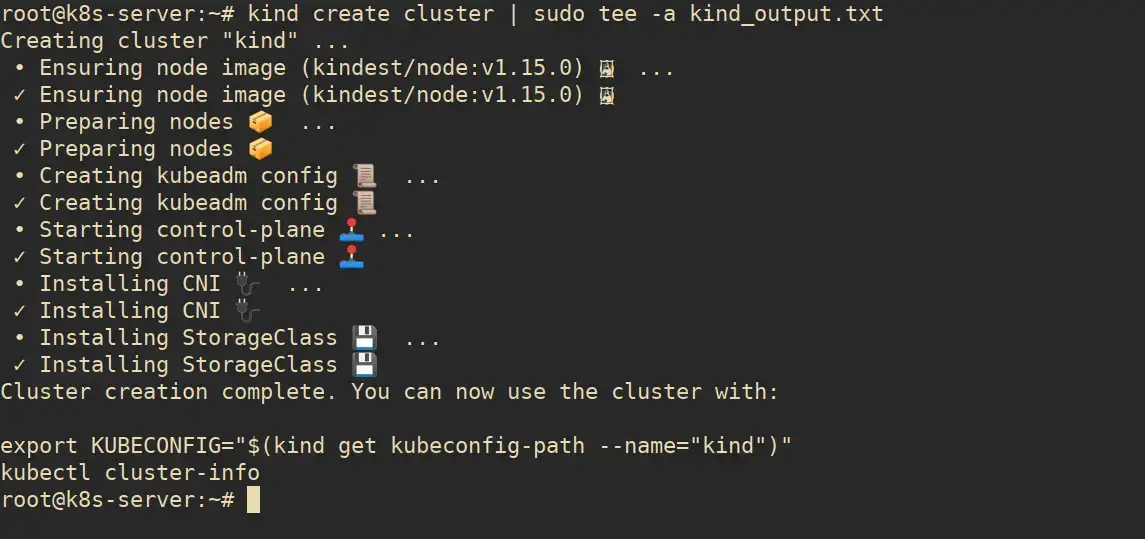Learn how to – Running Local Kubernetes Cluster in Docker Containers.
Question: Can I run Kubernetes in Docker?. If you want to test Kubernetes without any commitment, the easiest and quickest way is to use Docker Containers. This method doesn’t have many prerequisites and is not resource-intensive. Any decent Linux machine which can run Docker is all that’s required.

We had earlier covered other methods that can help you get a running Lightweight Kubernetes Cluster on Linux. See below.
- Production Kubernetes Cluster with Ansible & Kubespray
- Deploy Lightweight Kubernetes with MicroK8s and Snap
- How to run Minikube on KVM
For Docker Lovers, this method is another option you can explore. The setup has been done on CentOS 7 & Ubuntu Server. But the process should be similar for other Linux distributions.
Step 1: Install Docker Engine
Start by installing Docker runtime engine, this will be used to run all Kubernetes services. Our guides below should be of great help.
- Install Docker and Docker Compose on Linux
- Installing Docker CE on Ubuntu / Debian / CentOS
- How to install Docker on Fedora
For quick install you can use below commands to install Docker:
curl -fsSL get.docker.com -o get-docker.sh
sudo bash get-docker.shConfirm if docker is installed properly by running:
$ docker version
Client: Docker Engine - Community
Version: 20.10.19
API version: 1.41
Go version: go1.18.7
Git commit: d85ef84
Built: Thu Oct 13 16:46:58 2022
OS/Arch: linux/amd64
Context: default
Experimental: true
Server: Docker Engine - Community
Engine:
Version: 20.10.19
API version: 1.41 (minimum version 1.12)
Go version: go1.18.7
Git commit: c964641
Built: Thu Oct 13 16:44:47 2022
OS/Arch: linux/amd64
Experimental: false
containerd:
Version: 1.6.8
GitCommit: 9cd3357b7fd7218e4aec3eae239db1f68a5a6ec6
runc:
Version: 1.1.4
GitCommit: v1.1.4-0-g5fd4c4d
docker-init:
Version: 0.19.0
GitCommit: de40ad0
Step 2: Install kind tool on Linux / macOS
kind is a tool for running local Kubernetes clusters using Docker container “nodes”. kind is primarily designed for testing Kubernetes 1.11+, initially targeting the conformance tests.
Linux:
curl -s https://api.github.com/repos/kubernetes-sigs/kind/releases/latest| grep browser_download_url | grep kind-linux-amd64 | cut -d '"' -f 4 | wget -qi -
chmod a+x kind-linux-amd64
sudo mv kind-linux-amd64 /usr/local/bin/kindmacOS:
# Using brew
brew install kind
# Using Curl
curl -s https://api.github.com/repos/kubernetes-sigs/kind/releases/latest| grep browser_download_url | grep darwin-arm64 | cut -d '"' -f 4 | wget -qi -
Windows:
choco install kindCheck version installed.
$ kind version
kind v0.16.0 go1.19.1 linux/amd64Step 3: Run Kubernetes cluster in Docker containers (“nodes”)
We now have all requirements satisfied. We should be ready to create a local Kubernetes cluster running on Docker containers.
sudo kind create clusterYou should get output like this:
Creating cluster "kind" ...
✓ Ensuring node image (kindest/node:v1.25.2)
✓ Preparing nodes
✓ Writing configuration
✓ Starting control-plane ️
✓ Installing CNI
✓ Installing StorageClass
Set kubectl context to "kind-kind"
You can now use your cluster with:
kubectl cluster-info --context kind-kind
Thanks for using kind!
You can view a running container with docker ps command.
$ sudo docker ps
CONTAINER ID IMAGE COMMAND CREATED STATUS PORTS NAMES
f0c2eff57d05 kindest/node:v1.25.2 "/usr/local/bin/entr…" 3 minutes ago Up 3 minutes 127.0.0.1:34989->6443/tcp kind-control-planeStep 4: Install Kubectl command-line tool
To access the Kubernetes cluster from the command line, you need kubectl command line tool. This can be easily installed by running the command:
curl -LO https://storage.googleapis.com/kubernetes-release/release/`curl -s https://storage.googleapis.com/kubernetes-release/release/stable.txt`/bin/linux/amd64/kubectlMake the kubectl binary executable.
chmod +x ./kubectlMove the binary into your PATH.
sudo mv ./kubectl /usr/local/bin/kubectlTest to ensure the version you installed is up-to-date:
$ kubectl version --client
Client Version: version.Info{Major:"1", Minor:"25", GitVersion:"v1.25.3", GitCommit:"434bfd82814af038ad94d62ebe59b133fcb50506", GitTreeState:"clean", BuildDate:"2022-10-12T10:57:26Z", GoVersion:"go1.19.2", Compiler:"gc", Platform:"linux/amd64"}
Kustomize Version: v4.5.7For other systems, refer to the official kubectl installation guide.
Configure Autocompletion:
source <(kubectl completion bash)
echo "source <(kubectl completion bash)" >> ~/.bashrc For zsh users, run:
source <(kubectl completion zsh)
echo "if [ $commands[kubectl] ]; then source <(kubectl completion zsh); fi" >> ~/.zshrcStep 5: Using kubectl with Kind
If $KUBECONFIG environment variable is not set, the default cluster access configuration is stored in ${HOME}/.kube/config.
Copy this file to your user accounf.
mkdir ~/.kube
sudo cp /root/.kube/config ~/.kube
sudo chown $USER .kube/configTest kubectl configuration.
$ kubectl cluster-info
Kubernetes control plane is running at https://127.0.0.1:34989
CoreDNS is running at https://127.0.0.1:34989/api/v1/namespaces/kube-system/services/kube-dns:dns/proxy
To further debug and diagnose cluster problems, use 'kubectl cluster-info dump'.
$ kubectl config get-clusters
NAME
kind-kind
$ kubectl config get-contexts
CURRENT NAME CLUSTER AUTHINFO NAMESPACE
* kind-kind kind-kind kind-kind
$ kubectl get nodes
NAME STATUS ROLES AGE VERSION
kind-control-plane Ready control-plane 11m v1.25.2
$ kubectl get namespaces
NAME STATUS AGE
default Active 11m
kube-node-lease Active 11m
kube-public Active 11m
kube-system Active 11m
local-path-storage Active 11m
$ kubectl get pods -n kube-system
NAME READY STATUS RESTARTS AGE
coredns-565d847f94-4f859 1/1 Running 0 11m
coredns-565d847f94-65vfd 1/1 Running 0 11m
etcd-kind-control-plane 1/1 Running 0 11m
kindnet-wqm6j 1/1 Running 0 11m
kube-apiserver-kind-control-plane 1/1 Running 0 11m
kube-controller-manager-kind-control-plane 1/1 Running 0 11m
kube-proxy-vx7tv 1/1 Running 0 11m
kube-scheduler-kind-control-plane 1/1 Running 0 11mYou’re on the right track to Learning Kubernetes using your local cluster. I recommend you visit K8s Concepts page to use interactive guides available.
Also check:
- Portainer – Install Best Docker UI Manager
- How To run Docker Containers using Podman and Libpod
- How To Setup Local OpenShift Origin (OKD) Cluster on CentOS 7
- How To Install and Use Source-To-Image (S2I) Toolkit on Linux
- Best Storage Solutions for Kubernetes & Docker Containers
Leave a Reply
You must be logged in to post a comment.